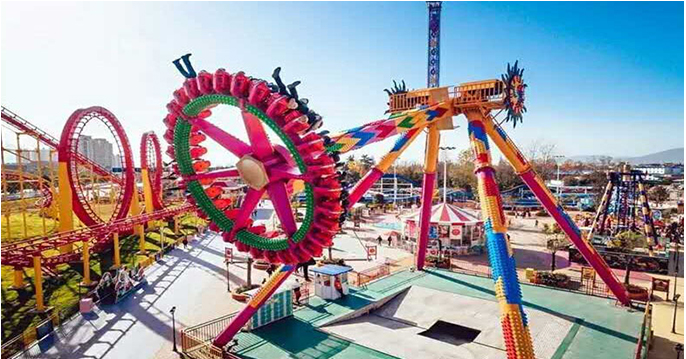- Albanian
- Arabic
- Belarusian
- Bengali
- Czech
- English
- French
- German
- Hebrew
- Hungarian
- Indonesian
- irish
- Italian
- Japanese
- kazakh
- Persian
- Russian
- Thai
- Uzbek
- Vietnamese
Basic Roller Coaster Design Principles for Exciting and Safe Experiences
Simple Roller Coaster Design Engineering Thrills on a Budget
Roller coasters are a quintessential part of amusement parks, offering exhilarating experiences that draw in thrill-seekers from all walks of life. However, the exhilarating rides we see today are the product of extensive engineering, innovative design, and substantial investment. For those looking to delve into the world of roller coaster design without breaking the bank, a simple roller coaster design can be both an educational project and a thrilling endeavor.
Understanding the Basics
At its core, a roller coaster is a track-based attraction that utilizes potential and kinetic energy to carry riders through a series of ups and downs, twists and turns. The fundamental principles of physics—gravity, energy conversion, and inertia—play critical roles in roller coaster operation. When designing a simple roller coaster, it's essential to grasp these concepts to create a safe and enjoyable ride.
Elements of a Simple Roller Coaster Design
1. Track Layout The layout of the coaster is the most crucial element. A simple design may consist of a series of gentle hills and banked turns. Using a modular approach where sections can be added or rearranged allows for flexibility and the opportunity for creativity. With a limited budget, consider using materials like PVC pipes or wood for a basic track. Design specifications should ensure that the curve radii are not too sharp to prevent high G-forces that could make the ride uncomfortable.
2. Support Structure The support structure must be sturdy enough to bear the weight of the roller coaster while providing stability. Using simple materials like treated lumber for supports can keep costs low. The spacing of the supports is essential; they should be close enough to maintain safety but far enough apart to optimize material usage.
3. Car Design The cars or seats on the roller coaster must be designed to securely hold riders. A simple design might include a lightweight frame with safety harnesses or lap bars made from plastic or metal. Ensuring that the cars can move smoothly along the track requires the right choice of wheels; often, small PVC wheels or ball bearings can be effective.
simple roller coaster design

4. Launch Mechanism For simple coaster designs, gravity can be used as the primary means of propulsion. By creating an initial steep drop, potential energy is converted into kinetic energy. To achieve this, the first hill must be the tallest point on the coaster. Alternatively, a small lift hill could be integrated, using a simple motor or even a manual crank for lower-budget designs.
5. Braking System Safety is paramount. A simple braking system can be incorporated at the end of the ride to slow down the cars before they stop. This can be achieved through friction brakes or a gentle incline that allows the cars to come to a natural stop.
Safety Considerations
Safety is critical in any roller coaster design, even a simple one. Conduct thorough tests before allowing riders on. Ensure all materials can withstand the forces exerted on them and that the ride's height and speed remain within safe limits. Additionally, regular inspections of the roller coaster, especially after heavy usage, can help to maintain safety standards.
Educational Value
The process of designing and building a simple roller coaster offers immense educational value. It introduces concepts of physics, engineering, and design, making it an excellent project for students and enthusiasts alike. Collaborating on such a project can also foster teamwork and communication skills, as individuals work together to solve problems and optimize designs.
Conclusion
A simple roller coaster design can be a fun and rewarding project, combining creativity with the principles of physics and engineering. While the thrill of high-speed loops and steep drops may be thrilling, even a straightforward design can capture the excitement of a roller coaster ride. By carefully considering the track layout, support structure, car design, and safety measures, anyone can create a memorable experience that reminds us of the joy of amusement parks—one simple roller coaster at a time. With imagination and a bit of craftsmanship, the sky is the limit, and the ride of your dreams could be just around the corner!
-
Flume Ride-Hebei Zhipao Amusement Equipment Manufacturing Co., Ltd.|Thrilling Water Attraction&Customizable DesignJul.30,2025
-
Flume Ride - Hebei Zhipao Amusement Equipment | Water Coaster, Thrilling DescentJul.30,2025
-
Flume Ride - Hebei Zhipao | Thrilling Water AttractionJul.30,2025
-
Flume Ride: Thrilling Water Attraction by Hebei Zhipao|Log Flume Manufacturers&Flume Ride DesignJul.30,2025
-
Flume Ride-Hebei Zhipao Amusement Equipment Manufacturing Co., Ltd.|Thrilling Water Coaster, Safe DesignJul.30,2025
-
Flume Ride-Hebei Zhipao Amusement Equipment Manufacturing Co., Ltd.|Thrilling Water Attraction, Safe DesignJul.30,2025
